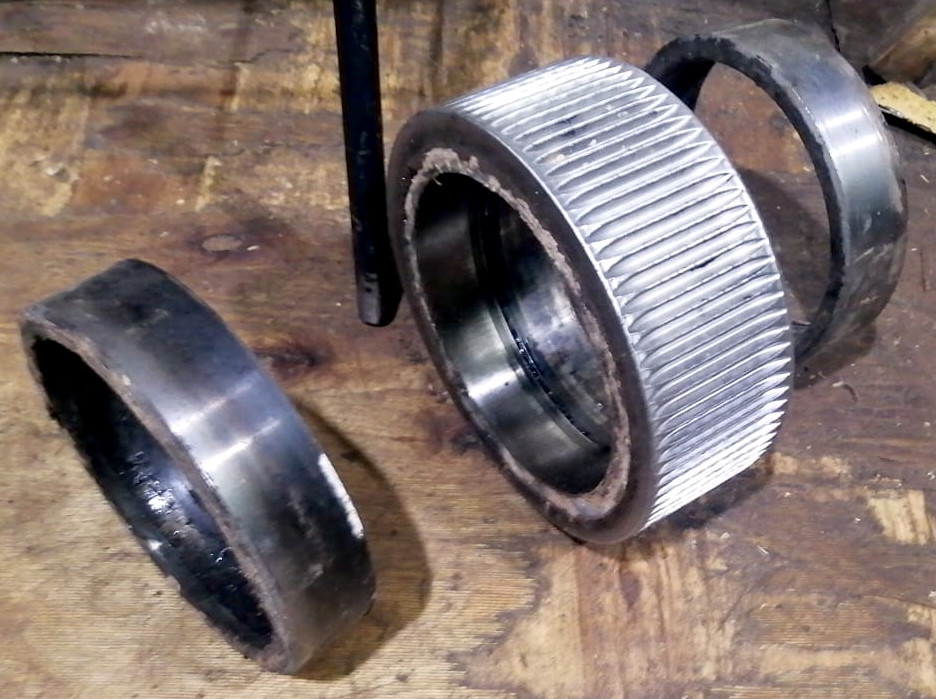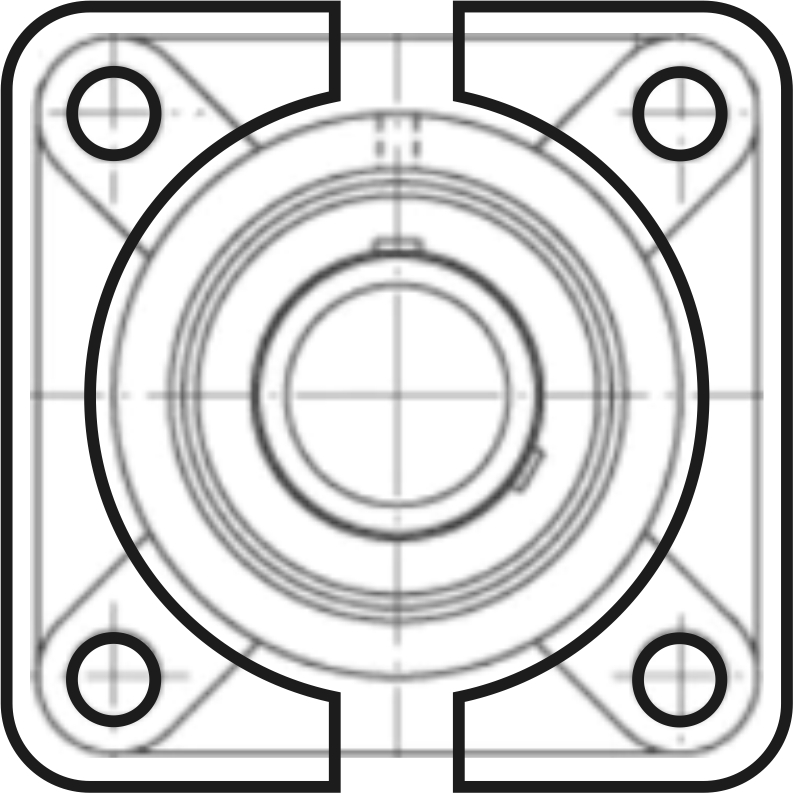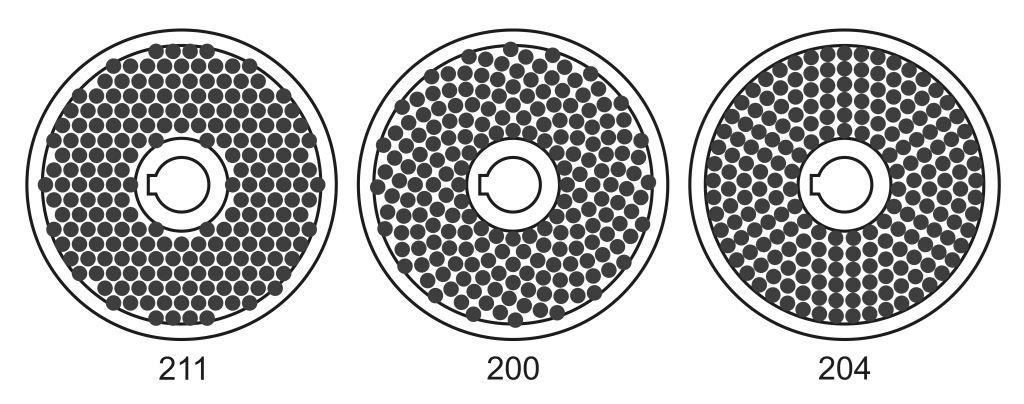 The requirements for shell material are somewhat lower compared to die manufacturing but also have specific features. Two popular grades of steel are used: bearing steel 100Cr6 and 20CrMnTi. You are already familiar with the latter from dies, and its only disadvantage is the small depth of hardening and carbon saturation. However, it allows the fabrication of shells in various configurations and geometries. Bearing steel is uniformly hardened throughout, making it easier to achieve a hardness of 64 HRC, though it is very sensitive to hardening conditions. If the tempering temperature is too low, the hardness exceeds required limits, making the shell quite brittle. If the shell's thickness is less than 10% of the diameter, under critical loads during feeding of over-dried material, they usually crack or break into pieces. If the shell's design involves thin edges near the covers and a thick part with a track, the hardening will differ significantly in these areas. Achieving a hardness of 45 HRC on the track results in up to 66 HRC on the thin edges. This leads to multiple deformation cracks even under light loads, and sometimes parts with different hardness peels off.
The requirements for shell material are somewhat lower compared to die manufacturing but also have specific features. Two popular grades of steel are used: bearing steel 100Cr6 and 20CrMnTi. You are already familiar with the latter from dies, and its only disadvantage is the small depth of hardening and carbon saturation. However, it allows the fabrication of shells in various configurations and geometries. Bearing steel is uniformly hardened throughout, making it easier to achieve a hardness of 64 HRC, though it is very sensitive to hardening conditions. If the tempering temperature is too low, the hardness exceeds required limits, making the shell quite brittle. If the shell's thickness is less than 10% of the diameter, under critical loads during feeding of over-dried material, they usually crack or break into pieces. If the shell's design involves thin edges near the covers and a thick part with a track, the hardening will differ significantly in these areas. Achieving a hardness of 45 HRC on the track results in up to 66 HRC on the thin edges. This leads to multiple deformation cracks even under light loads, and sometimes parts with different hardness peels off.
Specially cast thick-walled pipes are usually used as blanks for shells. This significantly reduces the amount of metal to be removed and lowers machining costs. However, it's important to note that the chemical composition at the beginning and end of the blank might differ significantly. The most successful experience in sourcing blanks is using used heavyweight drilling pipes. In most cases, such pipes are made from high-alloy steels capable of deep hardening and are extremely resistant to fatigue cracks.
An unpopular method of producing shells from malleable cast iron has proven justified when mass and high-precision casting is possible. Steel such as Hadfield 110Mn13 is hard to process, so testing was done with the similar 250Cr25W3. The thing is that such alloys, due to high carbon content and alloying elements, result in an inhomogeneous structure similar to composite-polymer materials. Hard carbonate crystals are bonded together by malleable iron, providing both wear resistance and ductility. Prototype samples with standard knurling were tested at several plants, showing on average 40-50% more resource compared to shells made from bearing steel.






